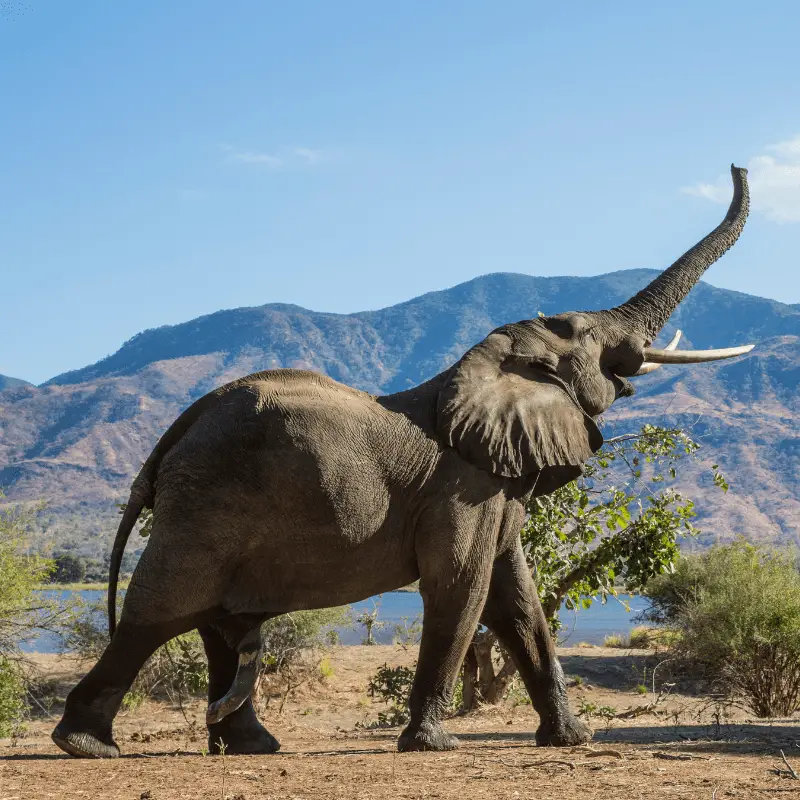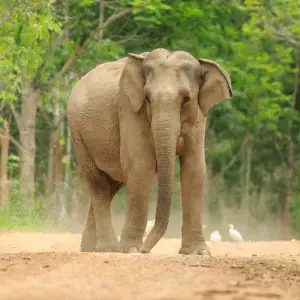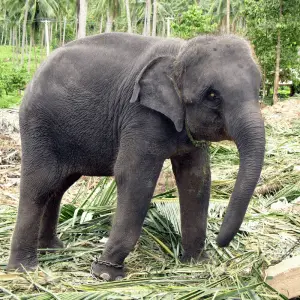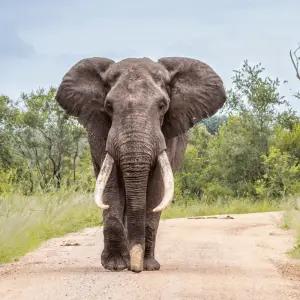You can tell whether an elephant is happy just by observing its body language. If you take some time to watch these gentle giants keenly, it will be easier to understand whether the elephant is in a good mood.
See below the tell-tale signs of emotions in elephants
Body Language and Behaviour
Elephants are honest when it comes to their body language. Below is a list of body language you will expect to see when an elephant is happy.
Tail
If you have a pet dog, you know that you can understand its emotion by watching its tail. Like a dog, you see an elephant’s emotional status by watching its tail’s movement.
For example, when the elephant keeps swishing its tail from one side to the next, swatting away flies, it simply means that the elephant is happy and content.
If you see that the elephant’s tail has gone stiff or kept its tail rigid on a single side, it means that the animal is highly anxious.
Eyes
Just like humans, an elephant’s eyes can tell you many different things. When the elephants are excited, stressed, or scared, they open their eyes wider.
This is a direct reaction generated by the release of adrenaline in the body of an elephant. It helps the elephants to perceive the threat clearly and handle it better.
It is a good sign if the elephant comes to you with almost half-closed eyes. It simply means that the elephant is happy and relaxed, and you do not need to fear it.
Ears
Most people think flapping the ears is one of the most significant signs to understand whether the elephant is stressed.
However, elephants flap their ears most of the time to keep their body temperature under control. Under the skin of the elephant ears, there are several veins that the elephants use to cool their blood temperature down.
If the elephant turns to you directly and faces you head-on with its ears extended at its side. This posture means the elephant is trying to look larger to intimidate you.
At this point, the elephant may also raise their tusks and trunk threateningly.
Trunk
There is a saying that if an elephant runs towards you with its trunk out, it is not an actual charge. But the thing is, in the wild, elephants do run towards humans while keeping their trunks extended.
The basic rule in the wild should be that you should feel threatened and back down right away if the elephant runs towards you. Always remember that elephants are much larger than you, so you should always treat them with respect.
Sounds
Elephants are very vocal and love to keep in contact with other herd members.
Rumbling
The rumbling of the elephants is one of the most common noises you hear in the African bushes.
Some of the elephants’ communication noises are at such a low frequency that we cannot even listen to them.
However, the low rumbling sounds we hear in the African jungles are the sounds of elephants communicating with each other. If you hear this sound while taking a tour of the African Savanna, you should sit back and enjoy it.
Trumpet
Trumpeting is usually not a good sign. Most of the time, when the elephants trumpet, they do so to express their distress. Even if it is a younger elephant that is trumpeting, you should be wary of it as its mother may come to the baby elephant in a matter of seconds.
If that happens, the mother is more likely to blame you for the temper tantrum of their baby than anything else. So, getting away from the situation while you still can is better.
Head-Shaking
Sometimes the elephant puts its head high up in the air and throws it back down. There is no doubt it is an intimidating posture. The elephants also know that. They often do their head shaking to intimidate the observer.
However, you do not always need to be afraid of this body language. If the elephant makes this posture and moves off, you can watch the herd without any trouble.
If the elephant does this head shaking and starts to come towards you, you should move away from the herd as fast as possible.
Temporal Dribble
Elephants get wet dribble that you can see on the elephant’s temples during the mating season. Most of the time, this dribble on the elephant’s head indicates that the animal could be highly aggressive.
Even though you can often see this temporal dribble on the male elephants during the mating season, other elephants, including the babies, can also exhibit this dribble. It is a sign of excitement or stress.







